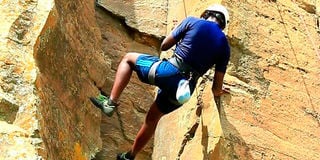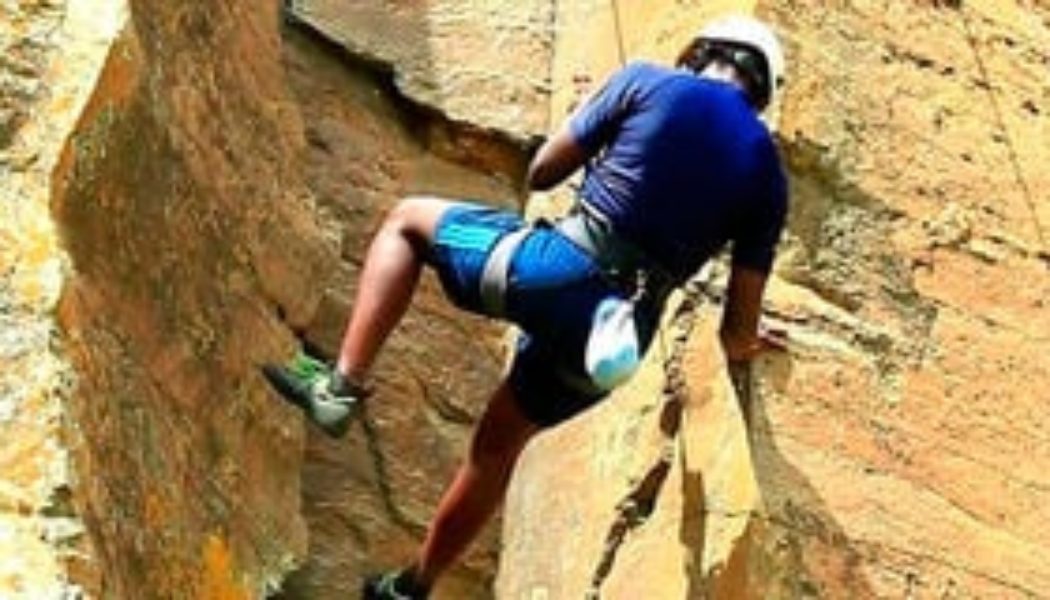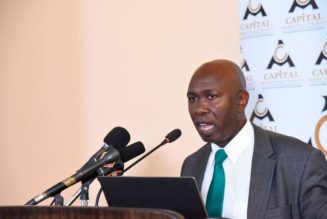“If you don’t fall, you don’t learn,” is a good motivational quote but not when you are harnessed on a rope 4,900m above sea level and so close to Mt Kenya’s highest peak.
First, getting there is the ultimate mountaineering experience. A fete yearned for by many. But this kind of achievement comes at a great risk.
In March this year, Martin Mumo—a tax advisor with Centum Investment Company—almost had a fatal accident near the Batian peak of Mt Kenya.
“I stepped on a loose rock and in a split second there was an avalanche beneath me,” says Martin.
Before he knew it, he was dangling dangerously in the air sending an eerie sensation to his person. Had he not been properly geared up, we wouldn’t be having this feature today.
Luckily, he escaped unhurt and proudly stood on the Batian peak—a testament to his resilience and determination. In November of this year, he will be roping up again to go on another gnarly attempt at technical climbing.
Technical climbing is a type of climbing that happens on complex and diverse terrains like rocks, glaciers, and ice, and that involves the use of specialised gear like ropes, harnesses, and carabiners.
This type of climbing relies heavily on the use of hands for grip and pulling oneself up a rope or a rock. Full-hand gloves in this case are discouraged since they may give a falsified perception of grip. Grip is the most important currency one can have in technical climbing.
Two years after Martin fell in love with hiking, it became lackadaisical even though he admits that hiking was seminal to technical climbing.
“I transitioned to technical climbing in 2021. That year, I had set a target to summit both the Batian and Nelion peaks as a challenge to myself. I am fond of stepping out of my comfort zone. Having done hiking and regular climbing one too many times, I threw my hat in the ring and I haven’t looked back.”
The transition came at a cost.
“I started by aligning my physical fitness with my new passion. I went to Hell’s Gate four times just to get a grip on the rocky terrain there.”

Martin Mumo, a tax advisor and fitness enthusiast, rock climbing at the Hells Gate National Park in November 2023.
Photo credit: Pool
Building endurance
This training, Martin says, is important in building one’s endurance and tenacity. Additionally, he is in the gym at least four times a week to stay on top of his game and to keep his weight in check.
“It is easier to pull a lighter body up a mountain, any gain in weight could slow me down,” he says.
His training takes two months for a nine to 12-hour journey up and back.
“If you think about it, training for two months for just a day is not everyone’s piece of cake. Standing outside looking in, it is an investment of time whose returns are not worth much.”
However, Martin is quick to justify that in things passion, returns are not measured as in other things of life. The scales are tipped with an uncanny bias.

Martin Mumo, a tax advisor with Centum Investment Company, poses for a photo during the interview at his office in Two Rivers on August 19, 2024.
Photo credit: Lucy Wanjiru | Nation Media Group
Above all, stay focused
The mountains are a scrupulous teacher and he is a studious learner. His expeditions have left him with many lessons.
“Focus is my greatest takeaway from the mountain. When you start at the base, it is always a difficult task. From unpredictable acts of nature to body malaise, you never know what you’ll meet on your way up. Your focus is what gets you to the top. Understanding that technical climbing is a choice you are consciously making helps you to focus. It is a thing that only the mountains teach you. They remind you that without focus you can’t go anywhere,” he points out.
Overcoming fear of heights
However ironic this may sound, he fears heights. But there lies his second lesson.
“If you let fear control you, you will never achieve anything in life,” he says.
“Many people ask me if I fear heights. The truth is a definite yes, but what is a passionate technical climber to do in the face of acrophobia? You learn to overcome fear. After the near accident I had earlier this year, you’d expect me to quit all of it or to consider it a sign from the universe to never attempt climbing again.
Contrary, it served as a motivation and a key learning point. “In training, we perform a lot of recce falls, we learn what a fall looks like and how to extract oneself from a sticky situation. Granted, there are times it will be beyond a climber to save themselves. That, however shouldn’t control your life. Nothing can be achieved when fear reigns,” says Martin.
Adequate preparation
The other lesson he has picked up over the 16 times he’s scaled Mt Kenya is preparation.
“You win in everything first by adequately preparing. For me, it is a multi-front approach; mental, physical, and diet-wise. All these facets have to be aligned with my mission to the top. These preparations also help you with the focus bit. You anticipate the challenges but you train your eyes on the peak. Financial preparedness is also key. These expeditions are paid for and as such, you must adequately plan for the expenditures that arise.”
Learning new things
Lastly, but prominently, he has learned to try new things.
“There is fun and adventure in trying new things. Go beyond what you are used to. Things are not as difficult as they seem at times. It will surprise how little it requires you to do certain things.”
One would ask, what has all this benefited him?
“I have found a good escape in technical climbing when I need to clear my mind. At work, I focus better, I achieve my goals easier, and I have learned to deal with my professional pressures better than before. I balance my social time better knowing that there are times I will not be available for those in my circles,” he concludes.









